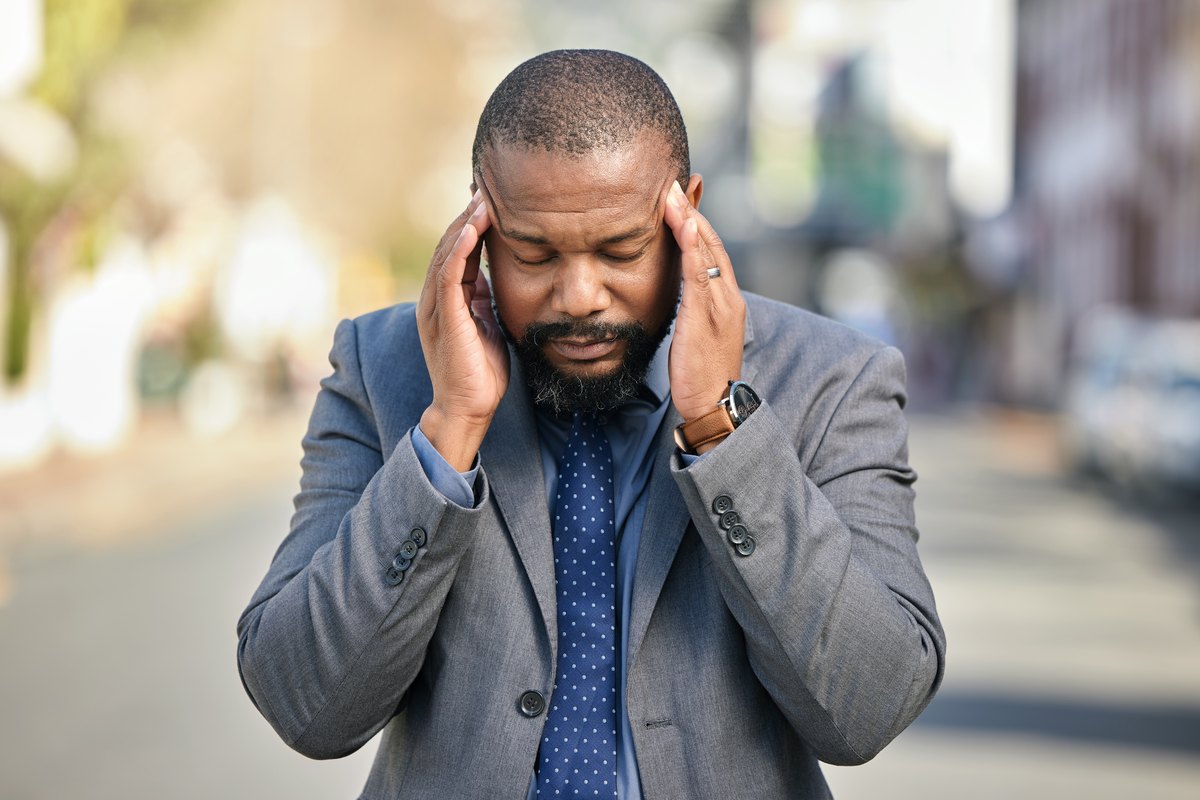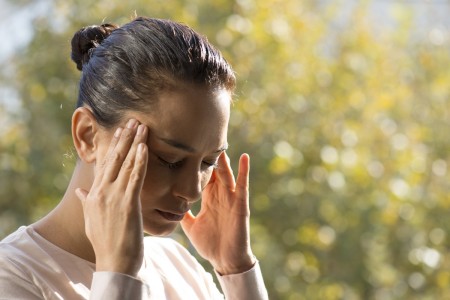
Advertisements
Does it seem like you can always predict a headache on the horizon based on the weather forecast? You're definitely onto something. From thunderstorms to sunny days, weather changes can produce a barometric pressure headache or miserable migraine symptoms.
Video of the Day
We spoke with Britany Klenofsky, MD, an assistant professor of neurology at the Icahn School of Medicine at Mount Sinai, to decipher the relationship between meteorological conditions and migraines, as well as ways to ward off weather-induced headaches.
Can Weather Cause Headaches?
Short answer: Yes.
"Many patients, nearly half of mine, will report that changes in weather affect their headaches," Dr. Klenofsky says. "The literature also reports weather as a migraine trigger anywhere from 50 to 70 percent of the time."
That's because people are affected by barometric pressure changes, light, temperature and humidity, Dr. Klenofsky says. Consequently, certain weather conditions that involve these variables — like rain, for example — can spark a headache. Here's how:
1. Barometric Pressure Changes
Variations in barometric (or air) pressure often occur during a storm when cold and warm air mix together. And these changes in barometric pressure — which alter the force (or weight) of the air — can disrupt the balance of fluid in your sinuses and lead to head pain, according to the Cleveland Clinic.
For some, the shift in temperature that can come with bad weather may also contribute to a so-called cold-weather headache, according to the Mayo Clinic.
In particular, a drop in barometric pressure is a well-known migraine trigger, Dr. Klenofsky says. Indeed, a small December 2015 study in SpringerPlus found that small decreases in atmospheric pressure prompted headaches most frequently in people with migraines.
Barometric pressure headaches may relate to the vascular theory of migraine. Though it's no longer the prevailing philosophy, this theory suggests that blood vessels in your brain dilate — which can happen during barometric pressure fluctuations — and then constrict, which leads to migraine pain, Dr. Klenofsky says.
2. Lightning Storms
"Lightning storms may also cause migraines in many patients, possibly through sferics," Dr. Klenofsky says. Generated by lightning, sferics are short-duration, low-intensity electromagnetic impulses that may trigger headache symptoms.
Advertisements
What's more, stormy days often come with higher temperatures that may put you at increased risk for dehydration. These are both additional risk factors for migraines, she says.
3. Heat and Sunlight
Not all headaches come from bad or cold weather: For others, migraines are more frequent on nice days. For instance, hot, sunny days can be problematic for people who get photosensitive migraines, Dr. Klenofsky says.
4. A Combination of Factors
It's important to note that while there seems to be a link between migraines, barometric pressure and sunlight, scientists still haven't found an indisputable correlate when it comes to weather, Dr. Klenofsky says.
"If you ask patients, they can have just as many headaches on bad-weather days as they do good-weather days," Dr. Klenofsky says. And this is reflected in the research: For example, studies find that people report migraines during both low- and high-barometric-pressure days (with no statistically significant link either way), she says.
But that doesn't necessarily mean there isn't a real connection between migraine headaches and weather, Dr. Klenofsky adds. Rather, it may indicate that migraines can be multifactorial. In other words, a variety of weather variables and triggers can produce migraines, and these factors differ from one person to another.
"We, as a scientific community, have yet to identify a concrete mechanism of migraine," Dr. Klenofsky says. "It may be that a lot of the brain and what it does continues to elude us, but it also very well may be that migraine can occur from a multitude of mechanisms."
Tip
Still not sure about the source of your headaches? Work with your doctor to try to determine the root cause or causes.
How to Prevent and Manage Headaches
While you can't control or circumvent climate and weather conditions, there are preventive measures you can take minimize headaches. Here, Dr. Klenofsky shares a few:
1. Keep a Journal
"Diary your headaches to see how many overall headache days you have," Dr. Klenofsky says. This will help you identify triggers (including weather) and strategize ways to avoid or limit your exposure to them.
2. Create a Prevention Strategy
Forming a prevention plan with your doctor is key. Your strategy should center around anticipating and alleviating triggers. That might involve increasing your hydration or temporarily using preventive medications, Dr. Klenofsky says.
Additionally, steer clear of migraine-activating foods, especially when there's rain or thunderstorms in the forecast, according to the Cleveland Clinic. Common offenders include:
- Alcohol
- Seeds
- Nuts
- Yeast, like in bread
- Preservatives like nitrates and nitrites






